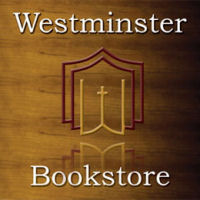I say this is a modest goal. To some, it sounds like a herculean task. It is crucial for understanding this volume, however, that readers keep in mind what Kruger is not out to prove. This book is not an all-out apologetic argument for the truth of Christianity. It is not a one-stop book to give to an unbeliever who wants a good reason for why he should believe that Jesus is Lord, and the Bible is telling the truth about Him. As Kruger helpfully states in summary fashion:
We are not asking how a person comes to believe in the canon (for the first time). Nor are we trying to prove the truth of the canon. We are asking whether the Christian religion can give an adequate account for the knowledge it claims to have. But such a question can be answered only on the basis of the Christian faith itself – that is, on the basis of the Christian conception of God, his purpose and plan, the nature of human knowledge, and so forth. And where else would we turn to acquire this information but to the very scriptural books in question? (289-290)It is here that one sees most clearly the method and assumptions Kruger will be employing in this book. Those with a bent towards presuppositional apologetic methodology will find themselves very much at home in this book. Since I lean that way in the first place, it was nice to see argumentation that did not seek to placate unbelieving approaches to the canon. Rather as Kruger points out, if the argument is that Canon can only be explained in Christian categories, and if he is right that canon is ultimately a theological issue (294), then an accounting for the canon must take place on the Christian’s turf. There is simply no way to provide a theologically cogent account of canon in a satisfactory way while granting the skeptic’s presuppositions, since he brings assumptions to the table which already discount the answers which make the Christian view cohere.
The book rests in some respects upon Alvin Plantinga’s work in the area of epistemological justification. Particularly, Kruger distinguishes between two specific challenges to the canon: de jure objections and de facto objections. De facto objections argue that a belief that we have the right books in our canon “is intellectually unacceptable on the grounds that it is false” (288). De jure objections, on the other hand, argue, “not that it is false, but that it is intellectually unjustifiable” (288). Kruger is clear that it is the de jure objection which this book is responding to. Once he has responded to the de jure objection, he reacts: “Whatever other objections the critic may have, it can no longer be this one” (295). It is not a book to destroy skepticism altogether, but to eliminate one powerful objection.
The first half of the book is devoted to exploring the various canonical models that are out there and then concludes with a presentation of the self-attesting model of canon, which Kruger if himself advocating. The self-attesting model, Kruger is seeking to show, not only avoids the problems that the other views of canon present, but also provides a valid model for canonization which faithfully reflects the teachings of Scripture regarding itself.
What is the self-attesting model of canon? In the simplest terms, Kruger explains that to say the Scriptures are self-attesting means that one turns to them in order to understand them. Put another way, “self authenticating” refers to the fact that “one cannot authenticate the canon without appealing to the canon” (91).
A self-authenticating canon is not just a canon that claims to have authority, nor is it simply a canon that bears internal evidence of authority, but one that guides and determines how that authority is to be established (91).This is something which is denied by all the other models of canon. As Kruger says, “all these models share one core characteristic. They all ground the authority of the canon in something outside the canon itself. It is this appeal to an external authority that unites all these positions” (88). What are these positions? Put briefly, the other models can be reduced to Community Determined models and Historically Determined models. There are variations within each of these models and nuances which deserve attention, but at the end of the day, as Kruger has already said, the determination of the canon is either put into the hands of the church, church leaders, or church historians with these views.
While Kruger does spend some time arguing that this view of the canon does have a historical basis in authors such as Turretin, Calvin, and Bavinck, I certainly would have appreciated a bit more than one paragraph on the historicity of this view. It is, of course, far more important to see if Scripture teaches this view, and so this semi-lack of historical material can easily be forgiven. It is certainly a subject worth following up on, however, as many in the Reformed community seem to be opposed to the self-attesting model in favor of a strictly historically-determined model. Regarding the Historically determined model, Ridderbos offers a helpful criticism:
Historical judgment cannot be the final and sole ground for the church’s accepting the New Testament as canonical. To accept the New Testament on that ground would mean the church would ultimately be basing its faith on the results of historical investigation (113).The choice is between models which rely upon various external authorities an finding a model which is consistent from beginning to end in its theology of canon. Kruger argues (and I agree) that the self-attesting model is such a model.
Kruger argues, as he develops the self-attesting model, that the Bible testifies to an “epistemic environment wherein belief in the New Testament canon can be reliably formed,” including three features: (1) Providential exposure of the church to the canon, (2) Attributes of canonicity, and (3) Internal testimony of the Holy Spirit. As Kruger explains, “These three components must all be in place if we are to have knowledge of the canon” (94).
Kruger also spends much time on (2) discussing what exactly the attributes of canonicity are. He argues that there are three attributes of canonicity – each of which make appearances – to a greater or lesser degree – in the other models of canon. What makes Kruger’s approach different, however, is his insistence that a canonical book will possess all three of these attributes: (a) divine qualities, (b) corporate reception by the church, and (c) apostolic origins. Now, these three attributes are not enough. Even if a book does possess all of these things, features (1) and (3) must also be present. Kruger looks to Scripture to derive this model and all of its features – I think he does it quite effectively. In fact, much more could be said. Kruger shows much restraint, in a lot of ways. Meredith Kline’s discussion in the first hundred or so pages of The Structure of Biblical Authority make a strong case that the canon itself can be entirely constructed based on the Bible’s internal covenantal structure. Kruger gives Kline a brief mention, and if you follow up on Kruger’s footnotes you’ll find a wealth of information which is highly beneficial in this respect.
The second half of the book is meant to deal with potential defeaters which might be brought up against the self-attesting canonical model. One argument is that it is not the apostolicity of many New Testament books are not unanimously agreed upon. However, Kruger points out that the lack of a consensus can hardly constitute a defeater since there is also not a “consensus” against the apostolicity of the canonical books. Furthermore, those who are critical of apostolicity oppose it on the basis of modernistic assumptions. Kruger rhetorically asks, “Why should we think Enlightenment-based methodologies are more likely to produce true conclusions than Christian ones?” (291)
In the last two chapters, Kruger addresses other defeaters. Modern liberal scholarship largely tends to claim that there was disagreement over the contents of the canon, and assumes that a divinely inspired canon would not entail as much disagreement as was involved in the development of the canon. Of course, this assumption of such scholars is highly questionable and assumes that disagreement in the early church is inconsistent with the self-authenticating model (which Kruger makes clear it is not – in fact it is expected). Furthermore, Kruger says, the critics are exaggerating the nature of the disagreements.
So much more could be said in commendation of Kruger’s book. It is my personal belief that Canon Revisited will be key in providing structure for future discussions of the canon. The book is logically structured, rigorously argued, and is Biblically centered, as would be expected for a book seeking to consistently apply the teachings of Scripture to the structure of the Biblical canon. After reading Canon Revisited, my own understanding of the canon has been deeply enriched. I want to recommend this book to others as highly as I possibly can. It will be considered the major work on canon from an advocate of the self-attesting model for years to come.




Are there any books that have the features listed under (2) but not (1) and (3)?
ReplyDeleteNo. Apart fromt these three features there is no proper epistemic environment in which to recognize a book as part of the canon.
ReplyDelete